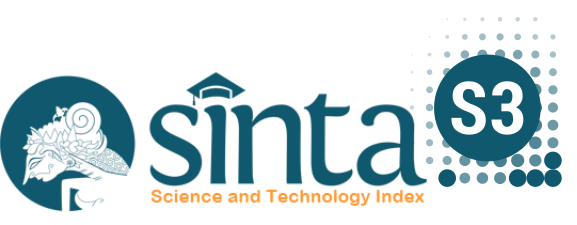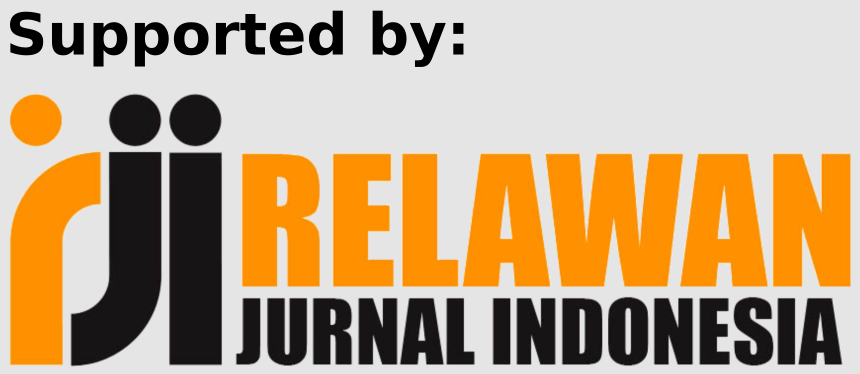Breastfeeding flashcards (BFC): An innovative tool for breastfeeding education using ADDIE model
DOI:
https://doi.org/10.31101/jhtam.4137Keywords:
Breastfeeding, Flashcards, Education, ADDIE, InnovativeAbstract
Downloads
References
Ara, Khanam, Papri, Nahar, Haque, Kabir, & Dibley. (2018). Peer counselling improves breastfeeding practices: A cluster randomized controlled trial in urban Bangladesh. Maternal & Child Nutrition, 14(3), e12605. https://doi.org/10.1111/MCN.12605
Asmodilasti, & Suparno. (2018). Effectiveness of Flashcard in Improving Cognitive Ability of 5-6 Year Old Students. Proceedings of the 4th International Conference on Early Childhood Education. In Semarang Early Childhood Research and Education Talks (SECRET 2018). https://doi.org/10.2991/SECRET-18.2018.16
Balakrishnan, R., Gopichandran, V., Chaturvedi, S., Chatterjee, R., Mahapatra, T., & Chaudhuri, I. (2016). Continuum of Care Services for Maternal and Child Health using mobile technology - a health system strengthening strategy in low and middle income countries. BMC Medical Informatics and Decision Making, 16. https://doi.org/http://dx.doi.org/10.1186/s12911-016-0326-z
Baska, Madjid, & Idjradinata. (2020). Effect of Health Education with Flashcard Media on Improvement of Knowledge and Reduction of Anxiety Degree in Adolescents Primigravida. Global Medical & Health Communication (GMHC), 8(1), 59–66. https://doi.org/10.29313/GMHC.V8I1.5192
Chotimah. (2021). Flashcard as a Learning Media to Motivate Students in Learning Vocabulary. Lingua: Jurnal Pendidikan Bahasa, 17(1), 67–75. https://doi.org/10.34005/LINGUA.V17I1.1373
Govoni, L., Ricchi, A., Molinazzi, M. T., Galli, M. C., Putignano, A., Artioli, G., Foà, C., Palmieri, E., & Neri, I. (2019). Breastfeeding pathologies: Analysis of prevalence, risk and protective factors. Acta Biomedica, 90, 56–62. https://doi.org/10.23750/abm.v90i4-S.8240
Grover-Baltazar, G. A., Macedo-Ojeda, G., Sandoval-Rodríguez, A., Martínez-Vizmanos, M., Carrera-Quintanar, L., & Vizmanos, B. (2021). Validation of the spanish-mexican version of the australian breastfeeding attitude questionnaire in higher education health students. International Journal of Environmental Research and Public Health, 18(9). https://doi.org/10.3390/ijerph18094609
Indonesian Ministry of Health. (2019). Permenkes No. 4 Tahun 2019. Ministry of Health, Indonesia.
Journal, Sato, Imura, & Kawasaki. (2022). Efficacy of a breastfeeding support education program for nurses and midwives : a randomized controlled trial. International Breastfeeding Journal, 2(1), 1–13. https://doi.org/10.1186/s13006-022-00532-2
Kanellopoulou, Kermanidis, & Giannakoulopoulos. (2019). The Dual-Coding and Multimedia Learning Theories: Film Subtitles as a Vocabulary Teaching Tool. Education Sciences 2019, 9(3), 210. https://doi.org/10.3390/EDUCSCI9030210
Kirschner, Sweller, Kirschner, & Zambrano. (2018). From Cognitive Load Theory to Collaborative Cognitive Load Theory. International Journal of Computer-Supported Collaborative Learning, 13(2), 213–233. https://doi.org/10.1007/S11412-018-9277-Y/TABLES/1
Lecomte, S., Demay, F., Ferrière, F., & Pakdel, F. (2017). Phytochemicals Targeting Estrogen Receptors: Beneficial Rather Than Adverse Effects? International Journal of Molecular Sciences, 18(7), 1–19. https://doi.org/10.3390/ijms18071381
Lee, J. S., Ganzert, A., & Jackson, C. (2019). The traveling mother: Navigating, visualizing and utilizing lactation spaces in U.S. airports. Building and Environment, 164(February), 106323. https://doi.org/10.1016/j.buildenv.2019.106323
Mayer. (2024). The Past, Present, and Future of the Cognitive Theory of Multimedia Learning. Educational Psychology Review, 36(1), 1–25. https://doi.org/10.1007/S10648-023-09842-1/TABLES/6
Ministry of Health In Indonesia. (2021). Indonesian Health Profile in 2020 (B. Hardhana, F. Sibuea, & W. Widiantini (eds.)). Kemenkes RI.
Seyyedi, N., Rahmatnezhad, L., Mesgarzadeh, M., Khalkhali, H., & Seyyedi, N. (2021). Effectiveness of a smartphone-based educational intervention to improve breastfeeding. 1–8.
Sharma. (2012). Communication and Educational Technology in Nursing. Elsevier India.
Sulasmi, Mufdlilah, & Rosyida. (2021). Sulasmi, S., Mufdlilah, M., & Rosyida, L. (2021). Factors affecting the failure of exclusive breastfeeding practice: a scoping review. Journal of Health Technology Assessment in Midwifery, 4(2), 117–129. https://doi.org/10.31101/JHTAM.2093
Tomori, Hernández-Cordero, Busath, Menon, & Pérez-Escamilla. (2022). What works to protect, promote and support breastfeeding on a large scale: A review of reviews. Maternal & Child Nutrition, 18(3), e13344.
UNICEF. (2020). Breastfeeding during coronavirus (COVID-19) | UNICEF Indonesia. https://www.unicef.org/indonesia/nutrition/coronavirus/stories/breastfeeding-during-coronavirus-covid-19
UNICEF, & WHO. (2023). Global Breastfeeding Scorecard 2023 Rates of Breastfeeding Increase Around The World Through Improved Protection and Support. https://www.unicef.org/media/150586/file/Global breastfeeding scorecard 2023.pdf
Wicaksono, Anantyo, Dewantiningrum, & Hariyana. (2020). The Effect of Breastfeeding Education Among Postpartum Mothers on Exclusive Breastfeeding Practice One Month After Delivery. Jurnal Kedokteran Diponegoro (Diponegoro Medical Journal), 9(3), 263–268. https://doi.org/10.14710/DMJ.V9I3.27506
World Health Organization, (WHO). (2022). Ten steps to successful breastfeeding. https://www.who.int/teams/nutrition-and-food-safety/food-and-nutrition-actions-in-health-systems/ten-steps-to-successful-breastfeeding
World Health Organization Regional Office for the Eastern Mediterranean. (2022). Exclusively breastfeed. http://www.emro.who.int/nutrition/breastfeeding/index.html
Wulandari, Aryani, & Meiranny. (2023). Adolescent Psychological Impact On Mental Health During Pregnancy. Jurnal Kebidanan Kestra (Jkk), 5(2), 178–184. https://doi.org/10.35451/jkk.v5i2.1536
Yuniarti, Darussyamsu, & Fitri. (2019). Exclusive Breastfeeding Management for Worker Mother in Universitas Negeri Padang. Pelita Eksakta, 2(1), 11. https://doi.org/10.24036/PELITAEKSAKTA/VOL2-ISS1/67
Downloads
Published
How to Cite
Issue
Section
Citation Check
License
Copyright (c) 2025 Hanifatur Rosyidah, Indira Prameswari Rahayu, Noveri Aisyaroh, Jeffthanie Mathurin

This work is licensed under a Creative Commons Attribution-ShareAlike 4.0 International License.
Authors who publish with Journal of Health Technology Assessment in Midwifery agree to the following terms:
- Authors retain copyright and grant the journal right of first publication with the work simultaneously licensed under a Creative Commons Attribution License (CC BY-SA 4.0) that allows others to share the work with an acknowledgment of the work's authorship and initial publication in this journal.
- Authors are able to enter into separate, additional contractual arrangements for the non-exclusive distribution of the journal's published version of the work (e.g., post it to an institutional repository or publish it in a book), with an acknowledgment of its initial publication in this journal.
- Authors are permitted and encouraged to post their work online (e.g., in institutional repositories or on their website) prior to and during the submission process, as it can lead to productive exchanges, as well as earlier and greater citation of published work.

Journal of Health Technology Assessment in Midwifery is licensed under a Creative Commons Attribution-ShareAlike 4.0 International License..













